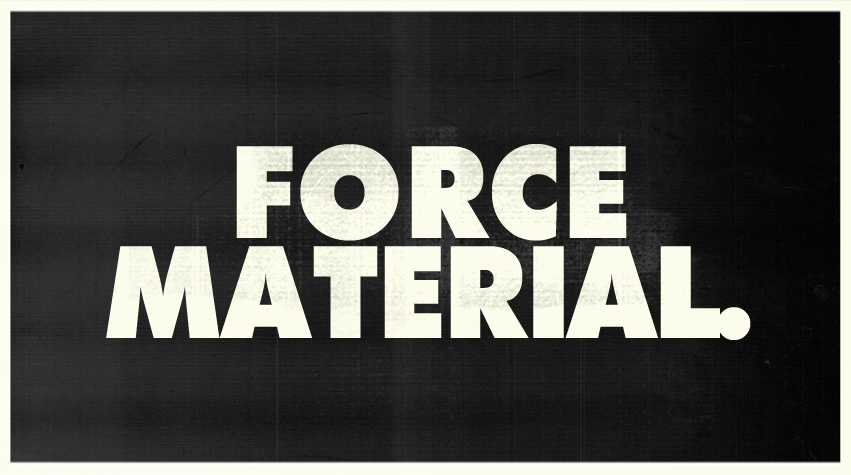The Origin of Darth Vader: The Look
The story of how one offhand decision and a big misunderstanding defined the look of cinema's greatest villain.
This month, to celebrate the release of Rogue One, we’re taking a deep dive into the secrets and stories surrounding the creation of Darth Vader, starting with a look at the four elements that make up this iconic villain — the name, the look, the body and the voice.
Since Darth Vader was still in a state of flux when concept artist Ralph McQuarrie began working on the project, the development of Vader’s character and backstory was heavily shaped by McQuarrie’s art.
“Vader was mentioned in the script as some sort of dark lord of the evil side. With the desert setting so prominent, I think George at first envisioned him as a Bedouin-like character,” McQuarrie explained in Steve Sansweet’s book, Star Wars: From Concept to Screen to Collectible.
Lucas has always been vocal about his love for Lawrence of Arabia, so it’s likely that these are the sorts of robes he had in mind.
“He suggested that maybe Vader could be in a silk robe that always fluttered as he came in, and he might have his face covered with black silk and have some kind of big helmet like a Japanese warrior.”
What Lucas was describing was something like a feudal Japanese kabuto, a type of helmet worn by the samurai warriors that frequented the Akira Kurosawa films Lucas loved so much (as Lucas told Rolling Stone in 1977, “Star Wars is slightly designed for Japan”).
What McQuarrie would add to that was something akin to a Japanese mempo, a mask used to protect a samurai’s face, and also to strike fear into their enemies.
“I reminded George that the first time we see Vader, he’s boarding one spaceship from another, and I asked, ‘How’s he going to breathe out there in space?’ So my illustrations show a breathing mask with a downward-curving snout and big goggles,” McQuarrie said.
Initially, Vader was only going to wear the mask to aid his breathing for the first scene, because it was necessary to his survival in space – but Lucas fell in love with the idea, and made it a permanent part of Vader’s outfit (and a crucial element of his backstory).
“I think George felt that keeping Vader always in his mask would be fascinating – like an actor in an old Greek tragedy. But it all came to pass because I thought he needed a mask to breathe,” McQuarrie said.
In the most famous of McQuarrie’s early paintings of Vader with his mask on, the villain appears to tower over young Deak Starkiller (often mistakenly identified as Luke Skywalker).
This painting would define Vader’s look, but his height was just a fortuitous misunderstanding of perspective that stuck — at this stage, McQuarrie once told Star Wars Insider, he still saw Vader as “a little, hunched, evil, ratlike person”.
McQuarrie always talked about his Darth Vader designs in terms of the Bedouin and Japanese influences, but when costume designer John Mollo — a military uniforms expert — saw McQuarrie’s art, he immediately made the comparison between Vader’s suit and pieces of trench armour worn by German soldiers in the First World War, and Vader's helmet and Nazi combat helmets.
Mollo and wardrobe supervisor Ron Beck prepared a “fashion show” for Lucas shortly after they began working on the film in January 1976. For Vader, they dressed a model in a black motorcycle suit, a Nazi helmet, a gas mask, and a monk’s cloak they found in the costumers’ Middle Ages department.
Lucas approved of the direction Mollo and Beck were going in, and so — with a massive budget of £500 — the crew constructed Vader’s costume.
A life cast was made of David Prowse to ensure it would fit the hulking actor properly. Clay was then used to sculpt the facial mask over the life cast of Prowse's head; the mask was molded and cast into a plaster master, and then the helmet was sculpted to fit the mask.
After the helmet was molded and cast in plaster, the masters were molded again to create the final fiberglass pieces that we see in the film.
In the spirit of McQuarrie’s paintings, Vader’s first paint job was in an all-black colour scheme, which proved to be a little problematic in practice — Vader’s costume was too black, to the point that its features didn’t actually show up on screen.
The face mask and shoulder armour were then given a two-tone paint scheme of gloss black and gunmetal silver; the contrast between the colours stopped the costume from washing out on screen, and finalised the look that fans know and love today.
To go deeper into Darth, I recommend tracking down copies of The Making of Star Wars by JW Rinzler, The Complete Vader by Ryder Windham and Peter Vilmur, Anakin Skywalker: The Story of Darth Vader and Star Wars: From Concept to Screen to Collectible by Steve Sansweet, and Star Wars Costumes: The Original Trilogy by Brandon Alinger.
Force Material is a podcast exploring the secrets and source material of Star Wars with hosts Rohan Williams and Baz McAlister. Listen and subscribe on iTunes, Spotify, iHeartRadio, TuneIn, Stitcher, PlayerFM and Castro; stay in touch with us on Facebook, Twitter and Instagram; and support the show by browsing our range of shirts, hoodies, kids apparel, mugs and more at TeePublic.












